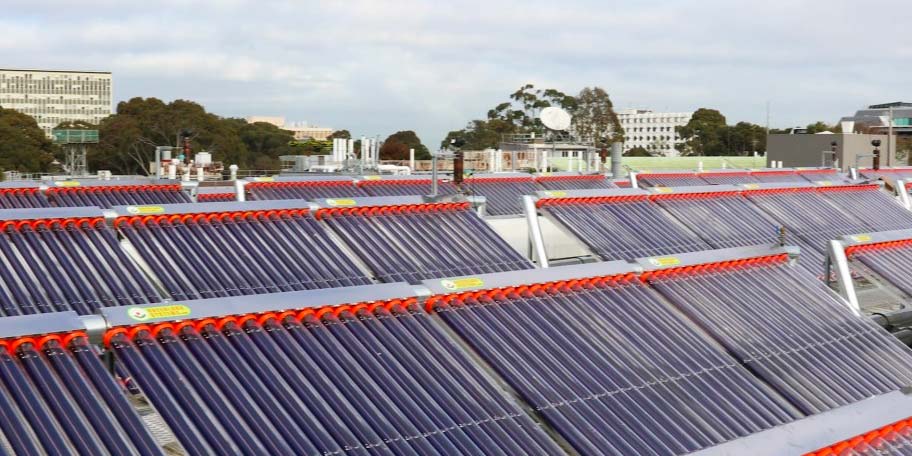Photo: Greenland
The district heating system at Monash Campus runs at 150 °C and 12 bars and is supplied by two 8 MW central gas boilers. LCI chose the highly efficient Greenland Orange Series because it can provide hot water at up to 200 °C. In contrast to concentrating systems, the Greenland collector can make use of diffused solar irradiation, meaning it performs well even in Melbourne’s often cloudy weather.
Greenland, which was founded as an industrial electronics supplier, runs an assembling production line for vacuum tube collectors in China and purchases key components from OEM manufacturers. Since the first-ever solar thermal installation in 2004, this segment has grown steadily, dominating the company’s turnover today. According to Pintar, the two drivers of commercial solar heat in Australia are the relatively high energy prices and the small-scale technology certificates (STCs, former RECs), for which larger solar heat plants are eligible as well.
More information:
www.lciconsultants.com.au
www.greenlandsystems.com.au
www.monash.edu
